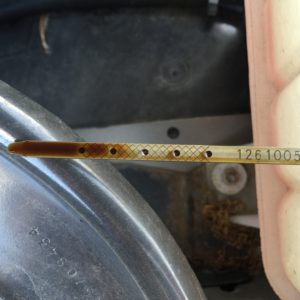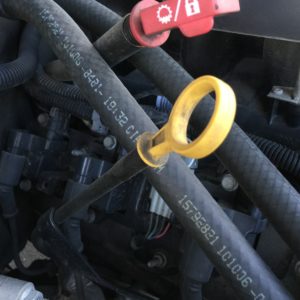Automatic Transmissions have gotten so good since they were introduced in the 1950’s. In fact, some of them have fluid that is supposed to last for the entire life of the transmission. This often lulls people into a false sense of security. Many people NEVER even bother to check their fluid. This is a huge mistake. By the time you are experiencing the symptoms of low transmission fluid, damage is already being done to your vehicle.
Transmission fluid is responsible for powering, lubricating, and cooling the transmission. That’s a lot for one fluid to handle!
A transmission with low fluid can become seriously damaged, and leave you stranded. You really want to do anything that you can not to run your transmission if you think that it is critically low on fluid. You’ll cause damage fast if it’s starting to slip from a low fluid condition.
Here are the signs that your transmission may have low fluid
- Higher RPM at any given speed– If your engine seems to be revving higher than it should be at any particular speed than it may very well be a symptom of low transmission fluid.
- Engine sounds different when going uphill– If you are going up a steep grade, you’ll find that the fluid may not be able to be picked up from the pan. The motor will than rev higher.
- High transmission temperature– An automatic transmission needs its fluid not just for converting mechanical energy to hydraulic in the torque converter; it also needs it for cooling purposes. So, if you are lucky enough to have a transmission temperature gauge than you can take this as a warning. Your transmission fluid is probably low.
- Put car into gear, but it’s not going anywhere– Often, if you let a car sit for a while, it’ll puke up a bunch of ATF. So, it may have been full the last time you used the car, but low next time you go to use it. The TH350 has always been bad about this. You’ll go to drive it somewhere and it’ll either not move at all or it’ll move only a little. This can often be caused by a loose torque converter. Did you happen to notice a vibration at highway speed? That’s also a sign of a loose torque converter.
What does Transmission Fluid do Anyway?
Transmission fluid is a hydraulic fluid that has three jobs:
- It acts as a lubricant- Just like motor oil it keeps the many complex mechanical parts inside of a transmission from wearing out.
- It cools the transmission- Here it does the same job as antifreeze going through a motor. It either makes
- It transfers power- ATF transfers power from kinetic energy into hydraulic energy and back again through the torque converter. It then transfers the power back to kinetic energy through the transmission and out the driveshaft. This process is what allows a car to idle in gear not moving.
This is different from a manual transmission, which uses oil for lubrication only. It’s amazing that transmission fluid can go the life of some cars without a change.
Here is more on automatic transmission fluid from CarTalk.
Don’t let the Fluid Get Low- Check It!!
The best way to avoid low transmission fluid is to check it often and follow the factory maintenance schedule. You should also visually inspect your transmission coolant lines. They are often the culprit, as they are exposed underneath the vehicle. Sometimes road debris can cut them. They run to the radiator and back to the transmission, so if something happens to the radiator that can cause you to lose fluid. Nearly every transmission will need to be checked at operating temperature. If you check it when it’s cold you will get a false reading from the dipstick.
You should always consult your owners manual for exact instructions on what to do with your particular transmission, but for most vehicles here is how you would check your fluid level:

- You want to make sure that the engine is both running and at operating temperature.
- The vehicle needs to be on a flat surface. Don’t check it on an incline.
- Make sure you are aware of where all of your moving parts are before sticking your hand anywhere near a running engine. You don’t want to lose a finger. Safety first.
If your fluid levels are full, but you are experiencing these symptoms, than you should pay attention to the color of your transmission fluid. Most transmission fluid is going to be a nice amber color. As it ages it’s going to look like a dirty red. This is generally will not cause the transmission to operate differently. If it its black or burnt smelling than it’s definitely time to swap it out. A good rule of thumb is that the nose knows. If it smells burnt, than it is. Change it before any lasting damage can occur
If you keep up with your maintenance, than you’ll probably never need to worry about this. But if you don’t, than it’s very nice to know the symptoms of low transmission fluid. Knowing them can save you thousands and keep you from being stranded on the side of the road, which can keep you and your family safe.


